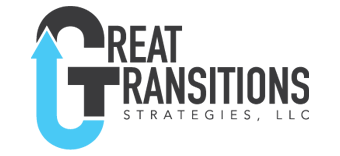“I need help managing up.”
“What do you mean, managing up?
“You know, managing my boss.”
“Define for me what managing your boss means to you”
“Getting her to ……”
Ever been in a situation where you feel you have to manage your boss. I have many clients come to me wanting to work on the skills and behaviors to “manage up”.
Here is my interpretation of “managing up”. It is managing how your leader/boss perceives you.
Yep, it is about you and your reputation.
For instance. If your boss is a micro manager you want to “manage” your boss to stop micro managing you. You want to be perceived as a capable autonomous operator not requiring micromanagement.
Here are my thoughts on what you should consider when “managing up”.
Two basic overarching thoughts: 1) Think strategically, at least two levels above your position and for the long & short term and 2) think of your boss as your most important client.
With those themes consider the following three elements:
– Needs – what does your leader/boss need?
– Expectations – what are the expectations of your boss?
– Evaluation – how is your boss being evaluated?
The three themes can be thought of as overlapping circles. Each impacting the other two.
Let’s add more detail. Thinking strategically several levels above your supervisor allows you to take on multiple perspectives. It also forces you to dig for some information. Such as company goals, directions, and pressures on your boss.
Your boss as the most important client. That should motivate you to listen better. What are her goals, pressures, and concerns? This may take some investigation and is a long-term project. Consider how to weave these into your regular one-on-ones.
Now from your boss’s perspective, think of the three concerns of; needs, expectations, and evaluation.
Needs
What does your boss need? If you are pitching a project or proposal, what does she need? Take your boss’s strategic view into account.
If you were hiring a contractor to remodel your kitchen, would you consider having the contractor remodel it according to their vision? Of course not. Do you want their input? Absolutely.
We as the subordinate and possible expert, often think we have the right answer? As the boss in the case of the remodel we need to understand the capabilities, limitations, and expertise of the contractor to execute our vision. Same with your boss.
She may need input from you on multiple topics you are unaware of.
Expectations
What are the boss’s expectations?
The three expectations I believe must be addressed in every endeavor are; timeframe, cost/budget, and quality. You can add as many other items as you like.
Start with clarity on each of these and confirm it over and over. Is your project a short term prototype to prove a concept or a detailed finished product? Two big differences.
Do you know how your work impacts the business at a strategic level? How valuable would that knowledge be to meeting expectations?
Evaluation
Have you ever considered how your boss is being evaluated? What are the metrics? The more you know about the criteria the better you can deliver. If the metric is “Return on Investment” (ROI), that is much different than creating a workable prototype to test a concept. Also, much different than a high quality reproducible product ready for market.
Final Thoughts
Thinking of your boss as “your most important client” can be misinterpreted. This mindset is not always saying “yes”. It is using your expertise to professionally engage with your boss to ensure a positive strategic impact on the organization.
This is not about pleasing the boss. It is about continuously delivering what is needed, as expected, and evaluated based on a known criterion.
How true is this statement for you?
My boss is my most important client and I provide the information/tools/products/services to demonstrate the strategic impact our team makes on our organization’s mission.





